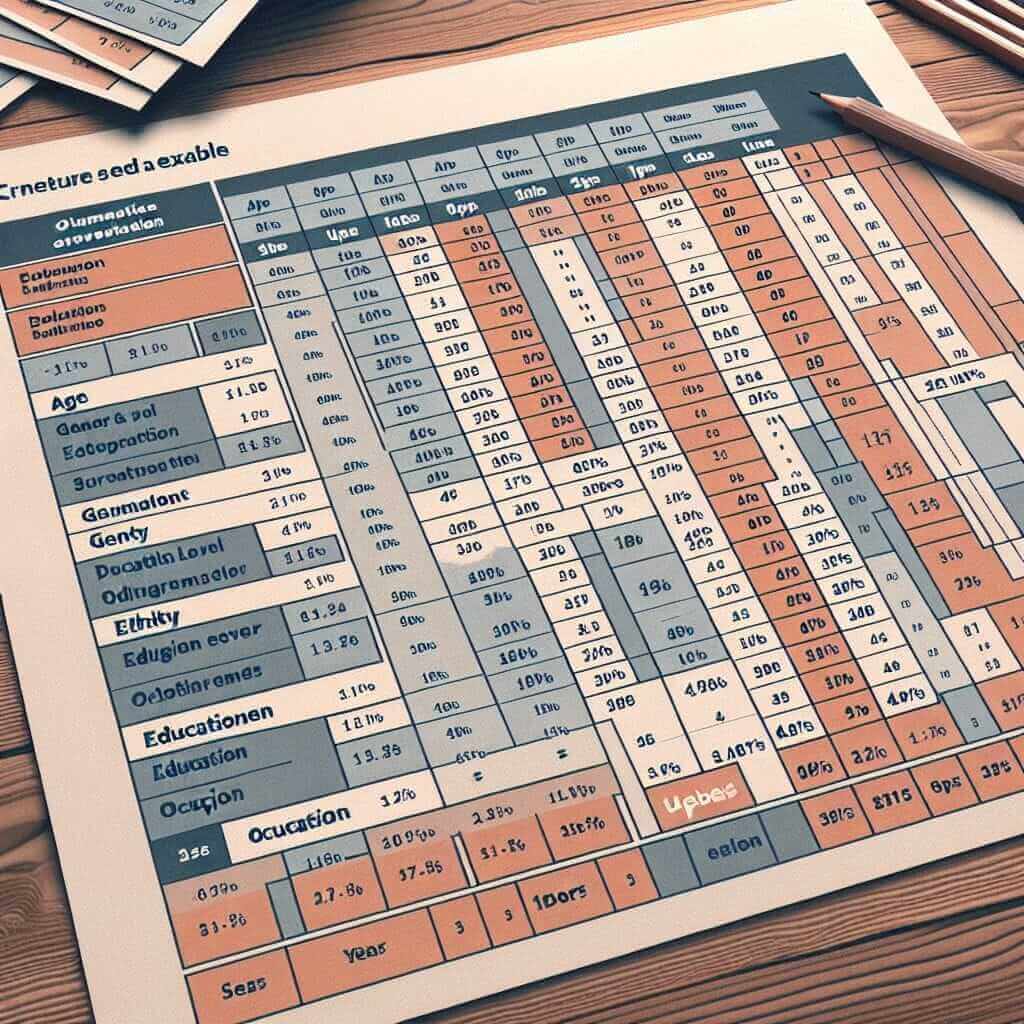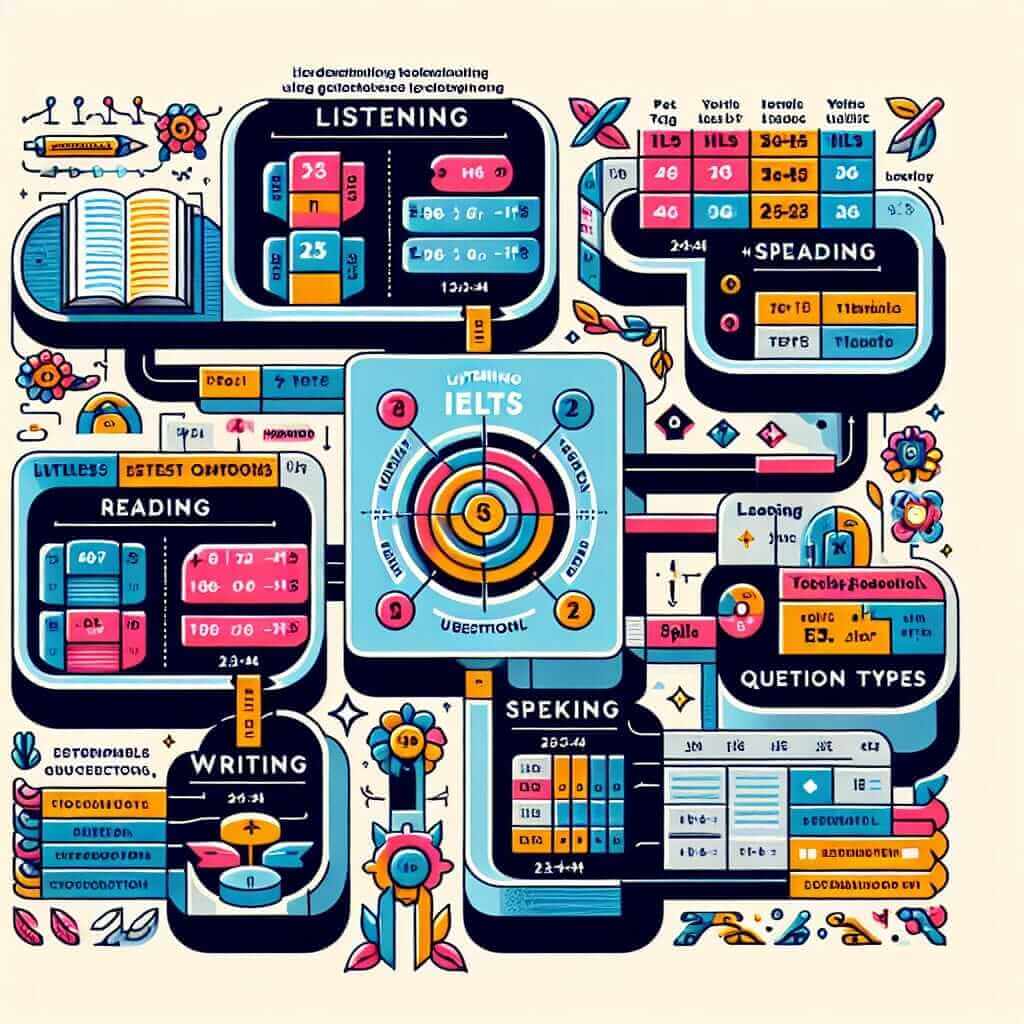Understanding IELTS Writing Task 1 Tables
In the IELTS Writing exam, Task 1 requires you to summarise visual information. One common type of visual you might encounter is a table. This table will present data in rows and columns, and your job is to accurately and effectively communicate the key information it contains.
Nội dung bài viết
Mastering table description is crucial for several reasons:
- Demonstrating Analytical Skills: It showcases your ability to interpret and present data clearly, a skill highly valued in academic and professional settings.
- Showcasing Language Proficiency: It allows you to demonstrate a wide range of vocabulary related to trends, comparisons, and data analysis.
- Boosting Your Score: A well-structured and detailed table description significantly contributes to a higher score in IELTS Writing Task 1.
Writing an Effective Table Description: A Step-by-Step Approach
Here’s a breakdown of how to write a successful table description for IELTS Writing Task 1:
1. Analyse the Table
Before you start writing, carefully examine the table:
- Identify the Topic: What is the table about? What does the title tell you?
- Understand the Rows and Columns: What information do the rows represent? What about the columns?
- Look for Units: Are there units of measurement (e.g., percentages, years, dollars)?
- Spot Key Trends: Are there any noticeable patterns, increases, decreases, or comparisons that stand out?
2. Structure Your Response
A well-organized response is essential. Here’s a suggested structure:
- Introduction (1-2 sentences): Paraphrase the information provided in the question prompt to introduce what the table shows.
- Overview (2-3 sentences): State the most significant trends or patterns you identified in the table. Avoid specific details in this section.
- Body Paragraph(s) (2-3 paragraphs): Present the key details from the table, grouping similar information together. Use specific data to support your points and make clear comparisons.
- Conclusion (Optional 1 sentence): You can include a concluding sentence to summarize the main points, but it’s not strictly necessary for Task 1.
3. Use Accurate and Varied Language
- Vocabulary for Describing Trends:
- Upward trends: increase, rise, grow, climb, soar, surge, improve
- Downward trends: decrease, decline, fall, drop, plummet, deteriorate
- No change: remain stable, stay constant, level off
- Fluctuations: fluctuate, vary, be volatile
- Vocabulary for Comparisons:
- Higher than: exceed, surpass, outperform
- Lower than: below, less than, fall behind
- Similar to: comparable to, on par with, mirroring
- Accurate Data References:
- “The number of…”
- “The percentage of…”
- “From (year) to (year)…”
- “(Category) accounted for…”
 ielts table example
ielts table example
4. Example:
Let’s assume you are given a table showing the percentage of people in different age groups who use social media daily in a particular country.
Example Introduction:
“The table illustrates the proportion of individuals within various age demographics who engage with social media platforms on a daily basis in [Country Name].”
Example Overview:
“Overall, the data reveals a clear correlation between age and daily social media usage. Younger generations demonstrate significantly higher rates of engagement compared to older age groups.”
Example Body Paragraph:
“Focusing on the younger demographic, almost 90% of individuals aged 18-25 reported using social media every day. This figure gradually decreases across older age groups. For instance, only 60% of those aged 35-44 access social media daily. The lowest level of daily usage is observed in the 65+ age bracket, where a mere 20% report engaging with these platforms.”
Tips for Success
- Manage Your Time: Allocate approximately 20 minutes for Task 1.
- Be Selective: You don’t need to include every single detail from the table. Focus on the most significant information.
- Accuracy is Key: Ensure your data references are precise and match the information in the table.
- Proofread Carefully: Leave a couple of minutes to check for any errors in grammar, spelling, and data interpretation.
Conclusion
By following these steps and practicing regularly, you can confidently tackle table descriptions in the IELTS Writing Task 1 and improve your overall band score. Remember, clarity, accuracy, and a strategic approach are key to success!


